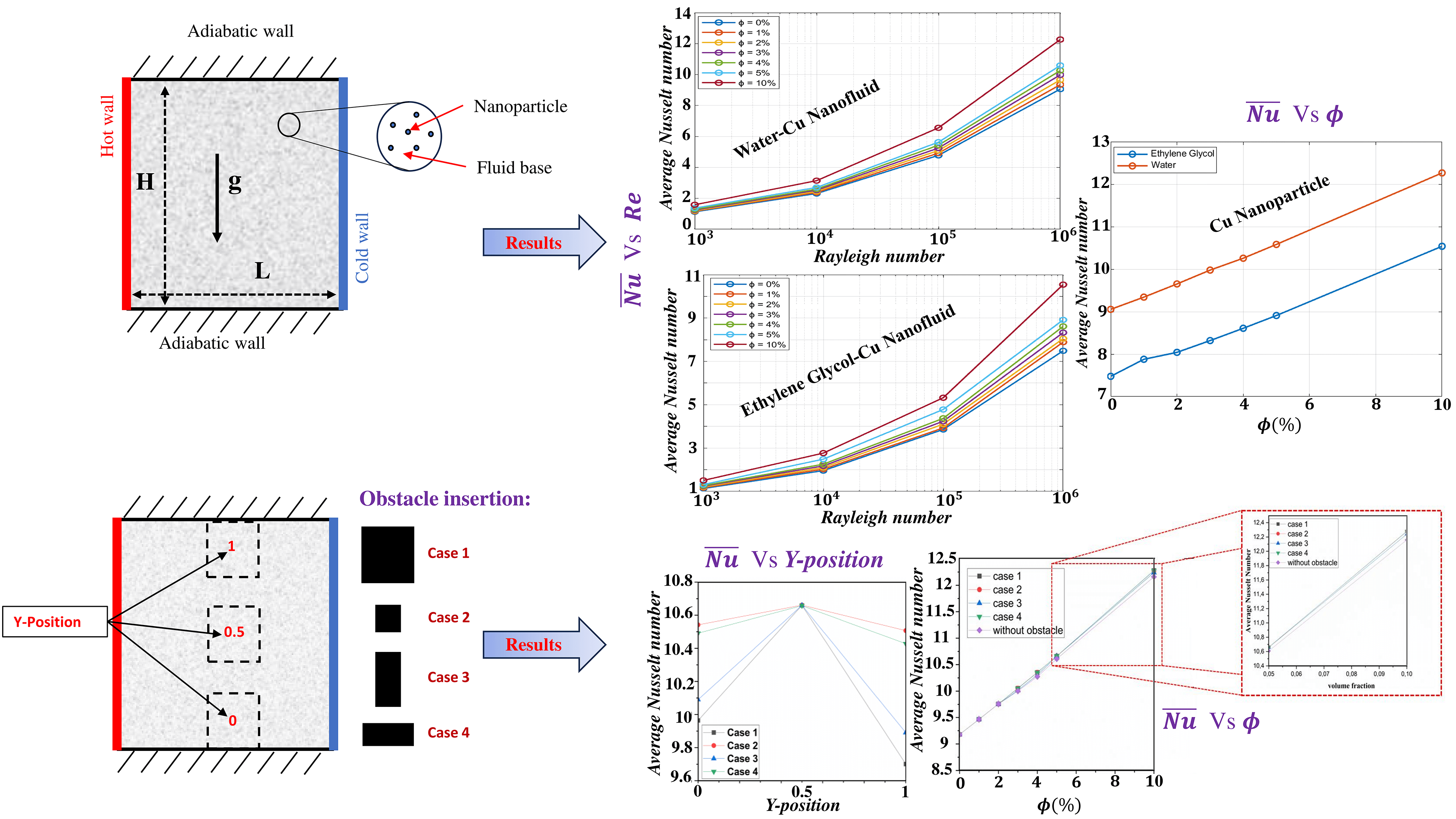 Open Access
Open Access
ARTICLE
Thermal Assessment of a Differentially Heated Nanofluid-Filled Cavity Containing an Obstacle
1 Mechanics & Energy Laboratory, Faculty of Sciences, Mohammed First University, Oujda, 60000, Morocco
2 Higher School of Education and Training, Mohammed First University, Oujda, 60000, Morocco
* Corresponding Author: El Bachir Lahmer. Email:
Frontiers in Heat and Mass Transfer 2025, 23(1), 207-230. https://doi.org/10.32604/fhmt.2024.060166
Received 25 October 2024; Accepted 09 December 2024; Issue published 26 February 2025
Abstract
This study focuses on numerically investigating thermal behavior within a differentially heated cavity filled with nanofluid with and without obstacles. Numerical comparison with previous studies proves the consistency and efficacy of the lattice Boltzmann method associated with a single relaxation time and its possibility of studying the nanofluid and heat transfer with high accuracy. Key parameters, including nanoparticle type and concentration, Rayleigh number, fluid basis, and obstacle position and dimension, were examined to identify optimal conditions for enhancing heat transfer quality. Principal findings indicated that increasing the Rayleigh number boosts buoyancy forces and alters vortex structure, improving the heat transfer efficiency across all nanofluid configurations. Moreover, nanoparticles with higher thermal conductivity, particularly Cu nanoparticles, exhibit slight improvements in heat transfer quality compared to Al2O3 nanoparticles, while higher nanoparticle concentrations generally lead to enhanced heat transfer effectiveness. Water-Cu nanofluids also demonstrate superior heat transfer performance over ethylene glycol-Cu nanofluids. Furthermore, the presence of obstacles at cavity extremities hampers overall heat transfer, whereas those positioned centrally augment heat exchange rates. This research offers valuable insights into optimizing convective heat transfer in nanofluid-filled cavities crucial for various engineering applications.Graphic Abstract

Keywords
Cite This Article
 Copyright © 2025 The Author(s). Published by Tech Science Press.
Copyright © 2025 The Author(s). Published by Tech Science Press.This work is licensed under a Creative Commons Attribution 4.0 International License , which permits unrestricted use, distribution, and reproduction in any medium, provided the original work is properly cited.


 Submit a Paper
Submit a Paper Propose a Special lssue
Propose a Special lssue View Full Text
View Full Text Download PDF
Download PDF Downloads
Downloads
 Citation Tools
Citation Tools
